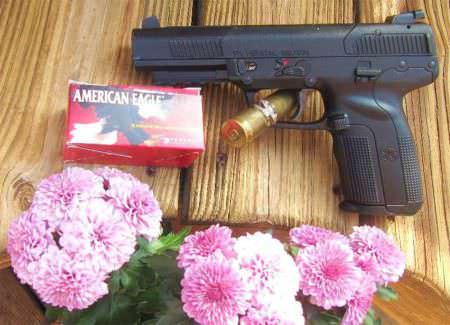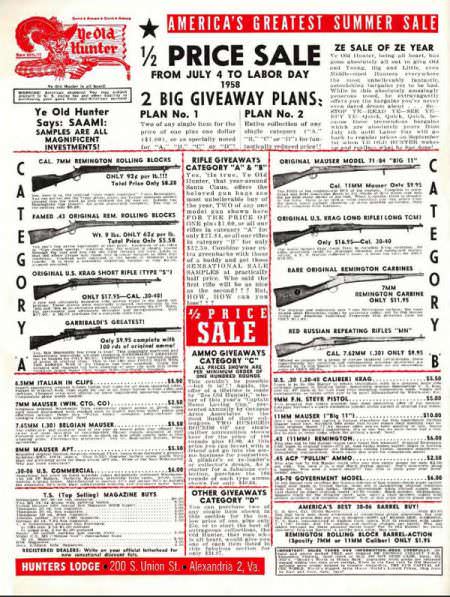
While searching for cases where pistols were used to defend against bears, three failures have been found. In the last published results, of 73 cases, that was a 4% failure rate. The very small sample size means a few cases can change the percentages of success or failure significantly. It is useful to know what happened in each case to determine how the failures and successes occurred.
The three failures involved the three species of North American bears. One case involving a polar bear and a .22 pistol in 1995, one case involving a grizzly bear and a .357 magnum in 2010, and one case involving a black bear and a .38 revolver in 2015.
Reasonably detailed accounts of the failures for the 2010 and 2015 attacks have been given in the last update, where 73 cases were examined.
The failure of the .22 pistol defense against a polar bear had little information.
On 1 September, 1995, two male tourists were attacked by an adult male bear on a remote island in eastern Svalbard. The two tourists defended themselves with a .22 calibre pistol which proved ineffective. One man was killed, the other injured. Police later shot the bear.
After considerable research, a more detailed account of the incident was found. The incident involved crew members of the tour/expedition ship Origo, a traditional ship refurbished and used for arctic tours since the beginning of the 1990s. In the summer of 1995, the ship was cruising in the arctic waters near Svalbard. The ship anchored in the Hinlopen Strait. A tourist party left the ship to explore. The party had an armed guard. Five members of the crew left to explore, separately. They brought a .22 pistol and a flare gun. From Spitsbergen: Svalbard, Franz Josef, Jan Mayen, 3rd Brant travel Guide, by Andres Umbreit:
Kiepertoyo Hinlopen Strait, August, 1995
Another five people of the crew set out separately with only a .22 pistol and a flare gun. After an hour’s march, the second party were met by a bear, 75m away and openly aggressive. The bear was distracted neither by warning shot nor flare and attacked one of the party. As he did so, he was shot, from a range of only 15m and turned against the man who had fired at him. This man tossed the gun to the first, who shot again. The process was repeated, with first one man being attacked and then the other. By the time the pistol was emptied and a knife drawn, one man was dead and another badly injured. The survivors retreated to the ship.
(snip)
On examination, three shots to the head were discovered, none of them piercing the cranium.
The victim had three years experience with the Origo, with many bear observations, and there were sufficient weapons on board to equip everybody.
Fatal polar bear attacks in Svalbard are rare. They are well documented. This is the same attack as mentioned earlier, with better details.
The author of the account mentions a small-caliber pistol must hit a very small target at close range. The range is not that important, as a .22 does not lose much energy in the first 50 yards.
Hitting a small target is important, and not easy from 15 meters (50 feet) away, when the target is moving. Most successful defenses against bear attacks with pistols occur at much shorter distances, often 20 feet or less.
This is the second case encountered where the person attacked threw the pistol to someone else. Both attempts resulted in failure. In the Mark Uptain tragedy, the 10mm Glock did not have any ammunition in it when thrown; in this case, the capacity of the pistol is unknown. In 1995, it would almost certainly have been 10 rounds or less. We do not know how many rounds were expended in warning shots.
Three .22 rounds hit the polar bear in the head. None entered the cranium. This is not unexpected. The brain of a polar bear may be slightly larger than a grizzly. A grizzly bear brain is about the size of a pint jar (29 cubic inches). The head of a large Kodiak bear has a volume of approximately 808 cubic inches, based on measurements supplied by Tom Smith of Brigham Young University. The Kodiak bear measured by Dr. Smith was exceptionally large, estimated at 1,400 pounds. If we assume a 1,000-pound polar bear, and proportional measurements, the head volume would be about 577 cubic inches or 2.5 gallons.
If you have a pint jar in a 2.5-gallon container, you have to know where the jar is located to be able to hit it. It is easy to miss. There is a lot of muscle and bone in a bear head that can absorb or deflect a .22 LR bullet if they hit at a poor angle or in the wrong place. A .22 is powerful enough to reach a bear’s brain if it hits the correct place at a reasonable angle.
According to the more detailed account, the captain of the Origo ordered the bear shot with a high powered rifle, (instead of police) as it had been hit with the .22 pistol. The attack occurred in August, while the first account stated 1 September. Those are minor variations but not unreasonable.
About Dean Weingarten:
Dean Weingarten has been a peace officer, a military officer, was on the University of Wisconsin Pistol Team for four years, and was first certified to teach firearms safety in 1973. He taught the Arizona concealed carry course for fifteen years until the goal of constitutional carry was attained. He has degrees in meteorology and mining engineering, and recently retired from the Department of Defense after a 30 year career in Army Research, Development, Testing, and Evaluation.






They chose poorly.
“Use Enough Gun” Robert C. Ruark
Great writer.
Any one who carries a .22 and thinks that they’ll take down any type of Bear probably is too stupid to Breed!!!!!!!!!!!!!!!!!!!
They should have used it to shoot themselves!
Why didn’t they try shooting it with the flare gun?
Did you miss the fact that they fired the flare gun and the pistol as warning shots?
It is unlikely that they had another flare and even if they did a flare gun is not quick to reload compared to a charging bear.
Contrary to movies, a flare is very unlikely to do serious damage except at point blank range. Hitting an aggressive bear with a flare would probably either be ignored or would just annoy the bear more.
Here is a truth about Norway. Anybody with any get up and go got up and left. This article is evidence. My relatives will never read this but they know my feelings. Uff Da.
Yeah, my ancestors left Norway in the 8th century and then went to Englande in 1066. We came to America in the 1600s.
Going into bear country with a .22 is kin to going bear hunting with a stick.
My question is, what purpose was the .22 supposed to serve? They must have carried it out there for some reason. Using what you have in an unexpected bad situation is one thing, but they couldn’t have possibly said to themselves “I better carry a .22 in case I come across a 1400 lb polar bear.” Makes more sense if they were preparing for attack weasels.
Hey, man-eating attack weasels are a thing. Read Dance of the Dwarfs by Geoffrey Household. Great story; I have read it half a dozen times in the 40 years since high school.
10mm and bigger.
At least a 6″ N or L frame .357, with heavy hard-cast +P.
Just so everyone knows, a polar bear is an animal who 100% of the time looks on humans as a food source. They will attack people without being provoked. I know it’s obvious to most already but when you know there is the possibility of danger — bring enough gun. Had these people brought enough gun there is the possibility they would have lived and not have been mauled.
The same goes with two legged predators. Keep your firearm on your person and use the biggest gun you can shoot well. Arm up, carry on.
I was told there was an entry in the diaries of the Lewis and Clark expedition.
commenting that shooting the grizzly bears “seemed to anger them”.
I would expect the members were well armed as that would be for food purposes as well. Were I in an area were I could be threatened by a Polar or Grizzly at a moments notice, I would have a cannon on a chest rig and a backup.
A lever action .45-70 or .45 Colt over my shoulder, or perhaps a Mossberg 590 full of 7+1 Brennekes.
Comments are from 4 years ago. I read the title and LMAO. What an idiot to try and kill a polar bear with the 22lr. He must have been desperate and the bear must have been on him because anyone should know that all you are really going to do with a 22lr is piss the bear off.
I didn’t see anything about the length of the barrel of the pistol/revolver, so we have NO idea how much energy might even be possible. The article’s claim
“The range is not that important, as a .22 does not lose much energy in the first 50 yards.”
is pretty much meaningless without such data.
I’ve seen some people who walk the backcountry carry a .22LR with an almost comically long barrel…effectively a rifle without a stock. Then there are those who carry around a tiny little 2″ snub-nosed revolver thinking it will easily protect them from mountain lions.
These comments are from 4 years ago… Which reminds me, if you are defending yourself from a bear with a handgun, the cartridge name should begin with at least a 4, and preferably have the word “Magnum” in it.
A .22LR is fine for defense against a bear, if you can manage to hit both of its eyes! But if the idiots wasted bullets as warning shots, there’s not much chance of doing that. And the article doesn’t say if the gun was a revolver or a semiauto. Too many people believe the cartoons on TV involving guns. Six bullets out of just one wheel gun doesn’t leave much room for error.
I get that in Norway, firearms are insanely restricted, but shooting a bear with a .22 is only going to anger it. If I couldn’t have a firearm of decent caliber, I’d at least want a powerful pepper spray, but I’m willing to bet in socialist Europe, even pepper spray is verboten. Maybe Euro politicians should be made to watch the bear attack scene from ‘The Revenant’.
I think I may have overlooked an important fact. While he attempted to shoot the bear through a rather thick mass of fur and hide, the subsequent shots could likely to have been fired from a position inside the bear. Under those circumstances the .22 may well be adequate.
Brings to mind an old Larson cartoon in which two polar bears are at an igloo. After beginning to chomp a hole in the top, one bear comments to the other bear…
“I just love these things. Crunchy on the outside and a chewy center.”
Norway was invaded by the Nazis in April of 1940. About a month later all resistance to the Nazis stopped. Norway was one of the countries with massive collaboration with the Nazis.
I doubt anyone wonders why a Norwegian would think a .22 was a good idea to use against a polar bear.
I see the cowards are out, again. Down check but run away without commenting.
The cadre of the weak, yellow spine.